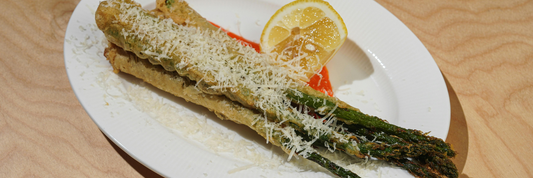In today’s F&B landscape, sustainability is no longer a “trend”—it’s an expectation. Diners want transparency, responsible sourcing, and real commitment from the brands they support. Yet many businesses unintentionally fall into the trap of greenwashing: promoting eco-friendly claims that are vague, exaggerated, or unverifiable. This damages trust fast, especially in an industry where reputation drives long-term loyalty.
For restaurants, cafés, and food businesses aiming to communicate their sustainability efforts effectively, clarity and authenticity matter more than ever. And this is also where the Kimecopak Membership Program plays a practical role helping F&B brands access real, measurable, and trackable green initiatives rather than relying on marketing claims alone.
-
Scent Marketing in F&B: How Aroma Can Influence Customer Decisions
-
Review Marketing: How to Encourage Customers to Share Their Experiences
-
Free Marketing with Branded Food Packaging: The Eco Advantage for Coffee Shops
What Is Sustainability Marketing?

Sustainability marketing is the practice of promoting your business’s environmental initiatives such as eco-friendly packaging, waste reduction, or ethical sourcing in a way that is transparent and verifiable. It blends storytelling with responsible actions, ensuring that your sustainability claims hold up under scrutiny.
Done right, sustainability marketing strengthens brand trust and attracts environmentally conscious consumers. Done wrong, it risks damaging your credibility.
The Problem: Greenwashing in the F&B Industry
Greenwashing happens when brands:
-
Make vague claims like “eco-friendly” or “green” without proof
-
Overstate or misrepresent their sustainability efforts
-
Highlight small green actions while hiding larger environmental impacts
-
Use misleading visuals, symbols, or colors to imply eco-friendliness
This often doesn’t come from bad intentions. Many F&B owners simply don’t know how to measure sustainability correctly or lack access to certified, compliant packaging and tools.
How to Market Your Green Practices Without Falling Into Greenwashing

1. Use Clear, Specific Claims
Avoid broad phrases. Instead of saying “sustainable packaging,” specify:
-
Compostable paper cups certified for commercial composting
-
Recyclable kraft food containers made from FSC-certified materials
-
Packaging free from plastic linings or chemical coatings
The more specific your claim, the more credible your message.
2. Back Every Claim With Proof
Consumers trust facts not vague promises. Provide:
-
Certifications (FSC, BPI, industrial composting, recyclability standards)
-
Photos or videos of actual products used in your kitchen
-
Data on waste reduction or packaging improvements
-
Transparent sourcing information
Kimecopak Membership supports this step by helping F&B owners choose verified products and track usage, allowing you to communicate real, quantifiable progress to customers.
3. Be Honest About What You’re Still Improving
Sustainability is a journey. You don’t have to claim perfection.
Example:
“We switched 60% of our packaging to compostable materials and are working to replace the remaining items by next year.”
Transparency builds far more trust than overstating your achievements.
4. Educate Your Customers
Customers love brands that help them understand the environmental impact behind their decisions.
Teach them about:
-
The difference between recyclable vs. compostable packaging
-
Why some items still require plastic
-
How to dispose of your packaging properly
-
Local waste regulations
This positions your brand as a responsible leader—not just a marketer.
5. Avoid Overusing “Natural”, “Eco-Friendly”, or “Green”
These words alone are meaningless without context. Always pair them with:
-
A clear explanation
-
A measurable fact
-
A certification or standard
6. Show Real Actions, Not Just Words
Consumers trust what they can see.
Use:
-
Before–after visuals of your packaging changes
-
Back-of-house content showing how you sort waste
-
Supplier spotlights
-
Customer or staff testimonies
Real operations = real credibility.
Apple Pie Marketing: A Strategic Guide to Boosting Sales, Customer Engagement, and Brand Value
How to Integrate Your Sustainability Practices Into Your Marketing Strategy

1. Build Sustainability Into Your Brand Story
Explain why your business cares about the environment and how it aligns with your values.
2. Communicate Your Improvements Regularly
Share packaging upgrades, supplier changes, or milestones every month.
3. Use Multi-Channel Storytelling
Promote your sustainability efforts through:
-
Social media
-
Website pages
-
In-store signage
-
Digital menus
-
Packaging labels
4. Make It Easy for Customers to Participate
Encourage them to:
-
Sort waste correctly
-
Bring reusable cups
-
Request reduced packaging
5. Showcase Verified Metrics From Your Membership
Use monthly Kimecopak sustainability data to reinforce your credibility.
Conclusion
Sustainability marketing is not about claiming perfection—it’s about demonstrating real progress backed by transparent proof. In the F&B industry, this honesty becomes a powerful competitive advantage.
By pairing genuine eco-friendly actions with clear, data-driven storytelling, your brand can inspire trust, strengthen loyalty, and stand out in a market wary of greenwashing.
And with the support of the Kimecopak Membership Program, your sustainability story becomes easier to execute, track, and communicate allowing your business to grow responsibly while making a real environmental impact.
-
LEARN MORE about How "Subscribe for a Happy Life" will benefits your business HERE!
-
LEARN MORE about Kim Vu, sharing on the challenges she faced as a former restaurant owner, and how she overcame them to create KimEcopak HERE!




